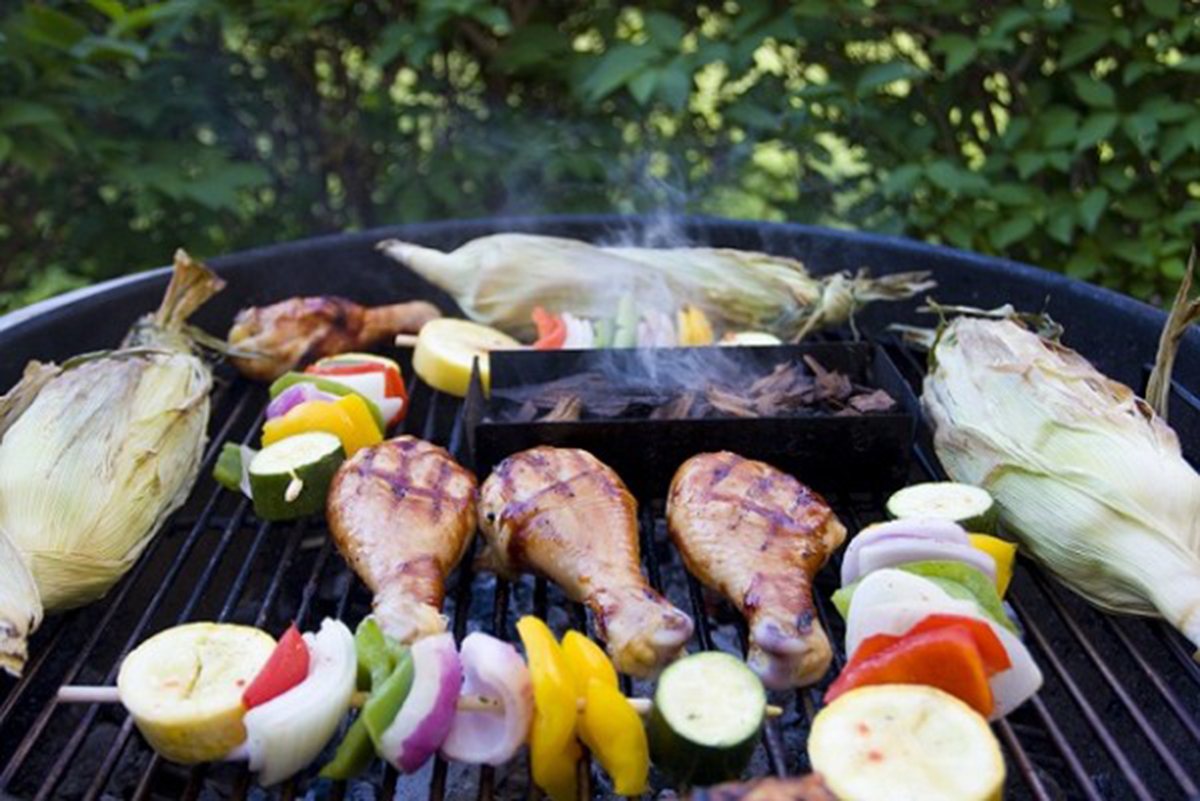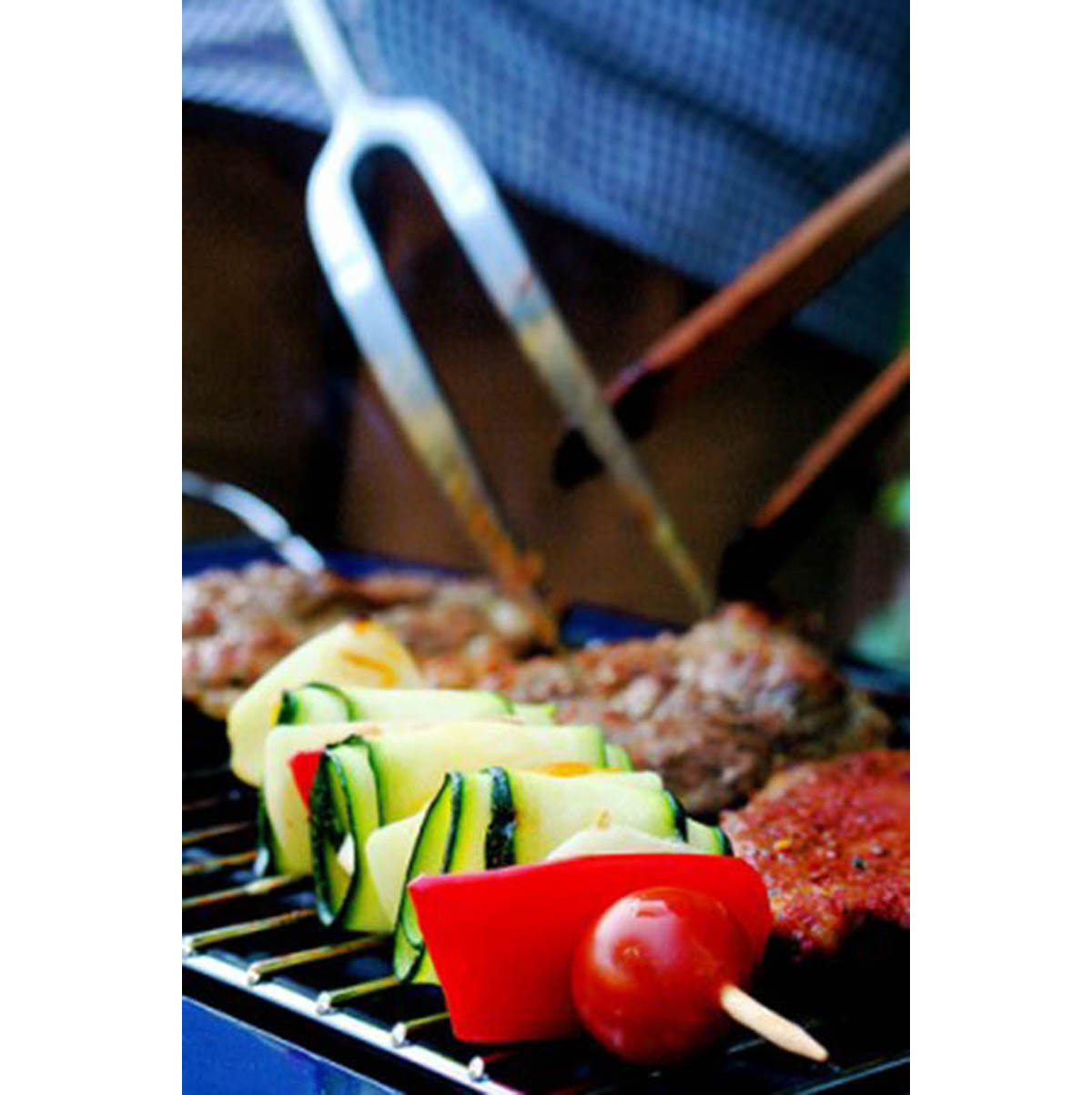The fun foods that can ruin a party are probably not what you would think. No nutritional expert recommends that we eat barbecued meat every day, and even a Texas cattleman recognizes that you can grill zucchini as easily as you can grill steak.
Are There Really Fun Foods that Can Ruin a Party?
The beverages we consume at parties may leave us a little tipsy, but they probably won't cause lasting damage if we have a designated driver take us home. And for most of us, good nutrition at parties is more about how much we eat rather than what we eat.
1. Uncovered foods served outdoors that have attracted flies
If food tastes good to humans, it usually also tastes good to flies. The problem with flies is that they don't wash their feet with soap before they land on your food, and you really do not want to know where flies have been before they share your BBQ. Flies digest their food by vomiting saliva on the food and working the saliva into the food with their feet, potentially transmitting Salmonella, Klebsiella, Camplyobacteria, and E. coli. These bacteria can cause food poisoning and urinary tract infections. While a single flyspeck is highly unlikely to make you sick, it is always a good idea to cover foods when they are not being served.2. Meat and fish prepared outdoors in assembly line fashion
At outdoor fish fries, it is not unusual for the cooks to set out a large number of fish or fish fillets that they dip in egg batter and flour or meal just before frying. If any one fish was contaminated by bacteria and dragged through the egg wash, then it will contaminate all the fish after it. Frying the fish does kills the bacteria, but if the chef touches the cooked fish with fingers contaminated by the egg batter, it is still possible to get food poisoning. There is a similar problem with meats marinated before barbecuing. Outdoor cooking is usually OK, but outdoor preparation is usually suspect.3. Hamburgers cooked to order and served from a single platter
Cooks typically put all the burgers on the grill at the same time and take burgers to served rare off the grill first. If you want your burger rare, you take your chances with E. coli contamination. If you ask for your burger well done and it is served from the same platter that was just used to serve a rare burger, E. coli contamination could rub off on your serving. Clean serving platters and clean grill utensils minimize cross-contamination.4. Foods cooked without access to running water
It is possible to cook safely on a camping trip. It just requires more planning. If your group uses an outdoor toilet facility without any way of washing hands and the cook also cooks outdoors without washing hands, exercise extreme caution about what you eat.5. Mayonnaise-based slaws or salads that are left on a serving table (even if there are no flies) for more than 30 minutes
Mayonnaise actually reduces the risk of food poisoning by making it hard for bacteria to form colonies large enough to survive stomach acid after they eaten along with the food. When the mayonnaise in the coleslaw or potato salad is constantly stirred, however, the bacteria are spread through the food and find more locations to multiply. If the salad is kept cold by putting the bowl on ice, then the main concern is flies.If you are concerned about the possibility of Salmonella or E. coli poisoning in your food, consider investing in a vial of food test strips. These test strips can be applied directly to food or to kitchen or outdoor surfaces to detect the presence of the strains of bacteria most likely to cause food poisoning.
Five More BBQ Foods to Avoid at All Costs
Bacteria are not the only potential party crashers at outdoor barbecues. Some methods of cooking and storage are almost sure to cause toxicity.6. Food cooked over wood treated with arsenic or creosote
 "Green" wood usually has been treated with arsenic to prevent decay. "Greasy" wood often has been treated with creosote. Both arsenic and creosote are potent carcinogens, thousands of times more toxic than any chemical that forms in meat when it has been grilled over charcoal. Don't eat foods that that have been cooked over wood taken from buildings or backyard structures.
"Green" wood usually has been treated with arsenic to prevent decay. "Greasy" wood often has been treated with creosote. Both arsenic and creosote are potent carcinogens, thousands of times more toxic than any chemical that forms in meat when it has been grilled over charcoal. Don't eat foods that that have been cooked over wood taken from buildings or backyard structures.
7. The gut, head, liver, and roe of coral reef fish
Certain tropical fish can carry ciguatera poisoning they get by consuming toxic algae that grows in hot water. The most common problem fish are barracuda, grouper, and jack. The most common locations of ciguatera poisoning are Hawaii and Florida. If you are exposed to this toxin, you may or may not experience common food poisoning symptoms such as diarrhea, nausea, and vomiting. You may instead experience neurological symptoms such as cold objects feeling hot or hot objects feeling cold, numbness in the fingers, or tingling in the lips. If you experience neurological symptoms after eating ocean-caught fish, seek emergency medical care.8. Fish in the the tuna family not stored in proper refrigeration
Tuna, and related fish such as wahoo, that are not held under refrigeration can develop toxicity that is unrelated to bacterial contamination. The flesh of these fish is especially high in the amino acid histidine. At higher temperatures, histidine degrades into histamine, the chemical that causes allergic reactions. You can experience allergies from the inside out if you contract scombroid poisoning after eating these fish. The first symptom is usually a peppery taste in the mouth. Then there may be diarrhea, vomiting, headache, flu-like symptoms, and hives, lasting for several days.9. Mushrooms not properly identified
Mushroom poisoning occurs every year in northerly locations where people traditionally pick their own mushrooms for summer feasts. Deaths from mushroom poisoning are rare but severe reactions are not unusual. Almost all the "commonsense" rules for avoiding mushroom poisoning are wrong:
- Folklore advises that most poisonous mushrooms are brightly colored. Actually, most poisonous mushrooms are brown or white.
- Folklore advises that insects will avoid poisonous mushrooms. This is not true. The Amanita death cap, for instance, attracts flies.
- Folklore advises that all poisonous mushrooms can be detoxified by boiling, frying, or pickling. While this is true for some mushrooms, it is not true for mushrooms in the death cap family.
- Folklore advises that poisonous mushrooms will turn rice red when boiled, so if a mushroom is cooked with rice that doesn't turn red, it must be safe. Red yeast rice, ironically, is therapeutic. However, at least one person has died after cooking rice with toadstools that did not turn it red.
- Folklore advises that poisonous mushrooms have a pointed cap while edible mushrooms have a rounded cap. The Amanita death cap, however, has a rouned cap.
- Folklore advises that poisonous mushrooms taste bad. Death cap poisoning survivors, however, report that the mushrooms were very tasty.
- Folklore advises that button mushrooms are always safe. This is true in almost all of the world but a few button mushrooms are in fact poisonous.
If you don't know your mushrooms very well, or if the person who picked the mushrooms does not know them very well, just don't eat them.
10. Foods to which you may have an unexpected allergic reaction
Sometimes you may have an allergy to a food you have never even tasted. This is most often the case for people who have latex allergies, who may also have allergies to avocados, bananas, chestnuts, kiwi fruit, mangoes, passionfruit, strawberries, or soy products. If you have an allergy to one kind of shellfish, often you will have an allergy to others, and you may also have allergies to fish.- Brehler R, Theissen U, Mohr C, Luger T (April 1997). ""Latex-fruit syndrome": frequency of cross-reacting IgE antibodies". Allergy 52 (4): 404–10.

